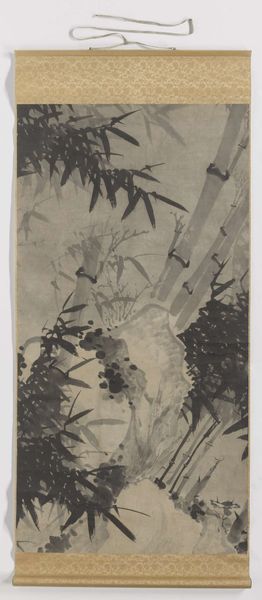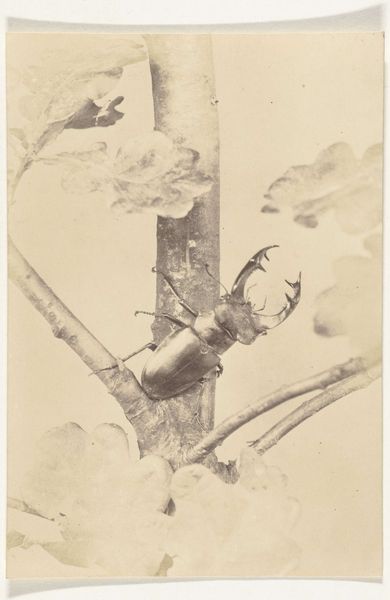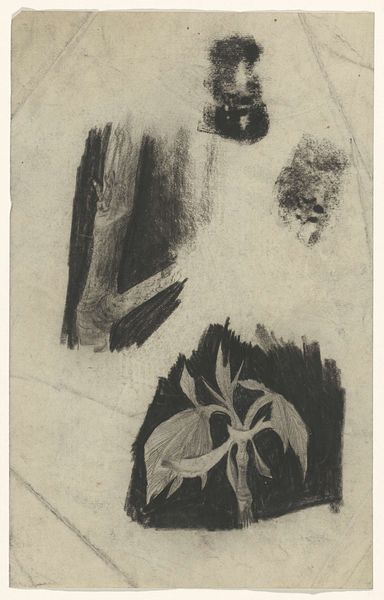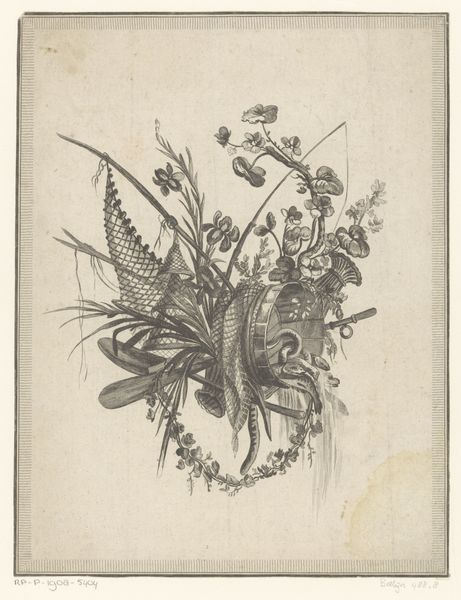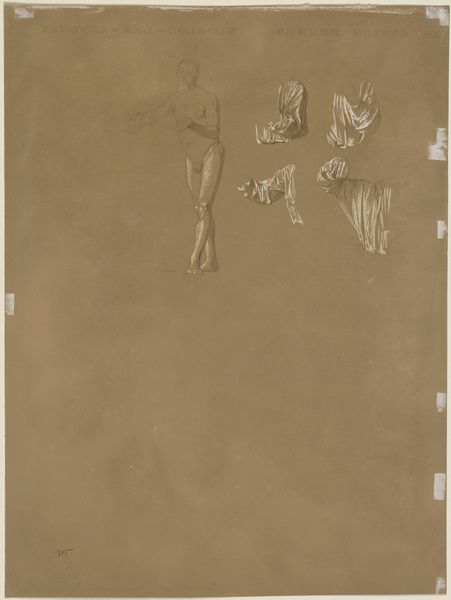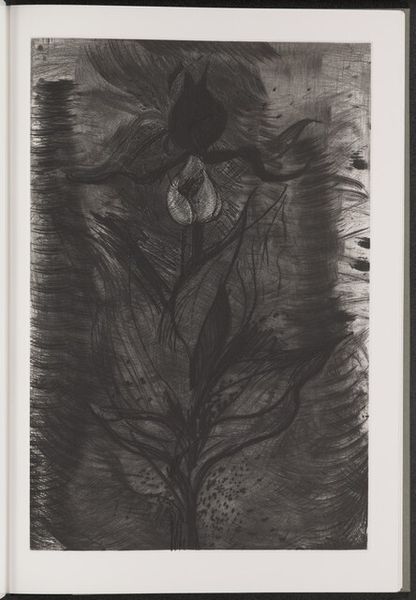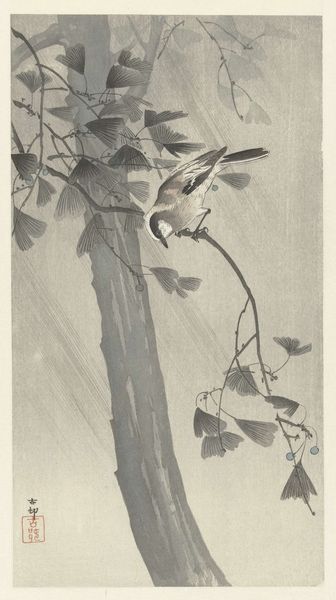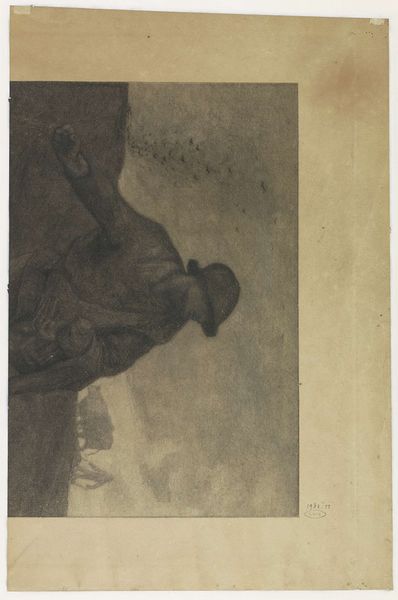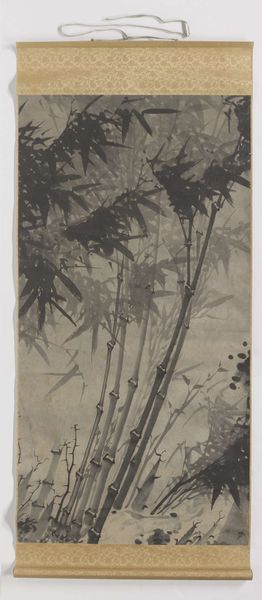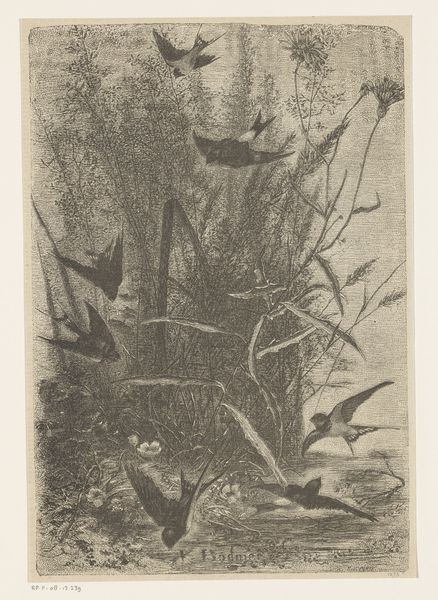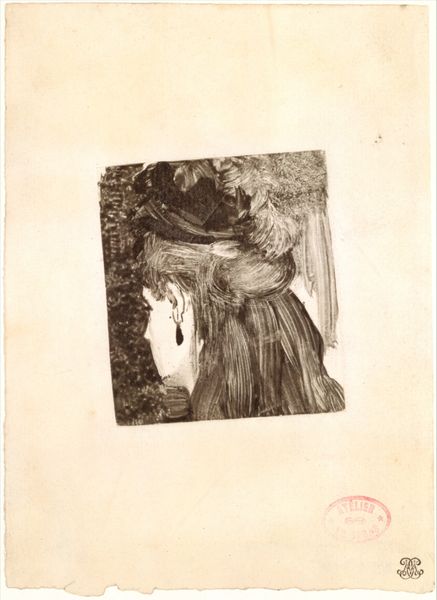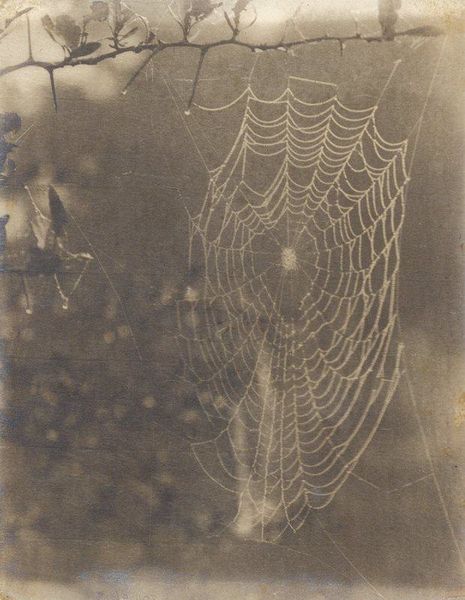
drawing, tempera, paper, ink
#
drawing
#
tempera
#
pencil sketch
#
asian-art
#
landscape
#
ukiyo-e
#
figuration
#
paper
#
ink
#
pencil drawing
#
coloured pencil
#
orientalism
#
watercolor
Dimensions: height 274 mm, width 180 mm
Copyright: Rijks Museum: Open Domain
Editor: This drawing, "Tronende godin op een draak en bamboestengel," or "Throned Goddess on a Dragon and Bamboo Stalk" by Yamamoto Baiitsu, dating from 1799 to 1857, seems so ethereal. I'm struck by the contrasting imagery: the solidity of the bamboo against the more dreamlike depiction of the goddess and the dragon. How do you interpret this juxtaposition? Curator: It's fascinating how Baiitsu plays with these contrasts, isn't it? Consider the historical context. The late Edo period was a time of both tradition and burgeoning social change in Japan. The presence of a powerful goddess on a dragon, symbols deeply rooted in mythology and imperial power, speaks to the established order. But the bamboo, often representing resilience and flexibility, might subtly suggest a society adapting to new ideas. Notice how the goddess is literally 'enthroned' and carries an object. Where would the artist want his viewer's eye to go? Editor: That’s an interesting way to think about it! The bamboo is almost obscuring her… Does that suggest that the power of these old traditions were starting to wane during the time of this piece's creation? Curator: It’s plausible. Think about the burgeoning merchant class and the influence of Western ideas. Artists during this period were often grappling with how to represent a changing social landscape. The seemingly traditional imagery is infused with a subtle questioning, perhaps even a gentle critique, of the established hierarchies. This tension is made visually manifest by the bold positioning of the stalk as well as the overall wash of monochrome palette, which might point to this drawing existing as an experiment with foreign medium, or even just being an underdrawing. How do these choices influence how we see the figure and what she may represent? Editor: I hadn’t thought about the monochrome wash possibly tying to an unfamiliar medium at all. I suppose the experimentation could signal a shift towards a new mode of artistic expression as a result of social change too. Curator: Precisely. Art doesn't exist in a vacuum. This piece invites us to consider the social and political forces shaping its creation and reception. What appeared as simple landscape and figure artwork may invite us to see it as commentary of a quickly evolving era. Editor: This really changes how I see the drawing. Thanks for the insights. Curator: My pleasure. It is an enlightening perspective, and art history thrives when considering different viewpoints.
Comments
No comments
Be the first to comment and join the conversation on the ultimate creative platform.
